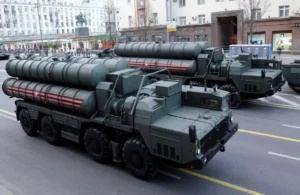Union Minister of State for Defence, Ajay Bhatt, marked a historic moment on January 14, by flagging off the indigenously developed Astra air-to-air missiles. The ceremony took place at the Kanchangbagh unit of Bharat Dynamics Limited (BDL) in Hyderabad, signifying a crucial step towards the missile’s induction into the Indian Air Force (IAF).
Astra Missile – A Technological Marvel
The Astra missile, a beyond visual range (BVR) air-to-air missile, stands as a testament to India’s technological prowess. Developed by the Defence Research and Development Organisation (DRDO) and manufactured by BDL for the IAF, the Astra Weapon System boasts unparalleled capabilities in its category, with a remarkable range exceeding 100 kilometers.
BDL’s Remarkable Achievement
The flag-off ceremony is a monumental achievement for Bharat Dynamics Limited, placing the company among a select few globally with the capability to produce cutting-edge air-to-air missiles. This achievement is a significant stride forward for India in terms of self-reliance in defence production.
Minister’s Commendations and ‘Atmanirbhar’ Policy
Union Minister Ajay Bhatt extended his congratulations to BDL for successfully realizing the production of the Astra missile, aligning with the Government of India’s ‘Atmanirbhar’ (self-reliant) policy. This marks a significant milestone in India’s pursuit of developing indigenous defence capabilities.
BDL’s Role in Defence Exports
Acknowledging Bharat Dynamics Limited’s crucial role, the Union Minister highlighted BDL’s contribution to boosting the country’s defence exports. BDL’s commitment to delivering state-of-the-art defence equipment not only strengthens India’s security but also positions it as a reliable partner on the global stage.
‘Make in India’ Initiative and Global Interest
BDL Managing Director, Commodore A. Madhavarao (Retd), emphasized the company’s dedication to the ‘Make in India’ initiative, ensuring maximum indigenous content in their products. He revealed that BDL has received numerous inquiries from friendly foreign nations expressing interest in acquiring the Astra Weapon System.
Expanding Manufacturing Capacities
Highlighting the expanding manufacturing capabilities of BDL, Madhavarao pointed out that the company is equipped to simultaneously meet the demands of both domestic and international markets for the Astra missiles. This dual-focus approach reinforces India’s position as a reliable supplier of advanced defence technology.
Important Questions Related to Exams
1. Who recently flagged off the Astra Missile for supply to the IAF?
a) Prime Minister Narendra Modi
b) Union Minister Ajay Bhatt
c) Defense Minister Rajnath Singh
2. What is the purpose of the Astra Missile mentioned in the news?
a) Space exploration
b) Naval defense
c) Supply to Indian Air Force (IAF)
3. What type of missile is Astra?
a) Air-to-Air Missile
b) Cruise Missile
c) Ballistic Missile
Kindly share your responses in the comment section.




 S-500 Missile System: Features, Range, S...
S-500 Missile System: Features, Range, S...
 India Prepares to Launch INS Aridhaman, ...
India Prepares to Launch INS Aridhaman, ...
 Indian Army Carries Out Successful BrahM...
Indian Army Carries Out Successful BrahM...







